IB Psychology HL - ALL Studies (AMRC) | Quizlet
1/36
There's no tags or description
Looks like no tags are added yet.
Name | Mastery | Learn | Test | Matching | Spaced |
|---|
No study sessions yet.
37 Terms
Maguire (2000)
A- To investigate whether the brains of London taxi drivers, who possess extensive navigational experience, differ structurally from non-taxi drivers, specifically in the hippocampus, a region associated with spatial memory.
M- A quasi-experimental, correlational study using MRI scans of 16 male London taxi drivers (who had completed the Knowledge and had at least 1.5 years of experience) and 50 male non-taxi drivers from an MRI database. The study was single-blind—the researcher analyzing the scans did not know which group the scans belonged to.
R- Taxi drivers had significantly larger posterior hippocampi and smaller anterior hippocampi compared to controls. Additionally, there was a positive correlation between years of taxi driving and the volume of the right posterior hippocampus. No other brain regions showed significant differences.
C- The study supports the theory of localization of function, suggesting the posterior hippocampus is involved in the retrieval of spatial memory, while the anterior hippocampus may be more engaged in acquiring new spatial information. These results indicate that brain structure can change in response to environmental demands—a phenomenon known as neuroplasticity.
Evaluation: Quasi-experiment, meaning no cause-and-effect conclusions can be drawn. To reduce researcher bias, brain scans were analyzed blindly. The use of MRI had high internal validity—participants weren’t performing tasks, just having their brains scanned. Although the sample was male-only, reflecting the reality of the profession, this limits generalizability. Ethically, the study was sound: no risk, informed consent, and non-invasive methods were used.
Antonova (2011)
A- explore the role of the neurotransmitter acetylcholine in the encoding of spatial memory in humans by observing brain activity during a virtual navigation task.
M- The study used a double-blind, repeated measures design with 20 healthy male participants. Participants were randomly assigned to receive either scopolamine (blocks acetylcholine receptors) or placebo, injected 70–90 minutes before the task. They performed the "Arena task"—a virtual reality navigation game—while undergoing an fMRI scan. After learning the location of a hidden pole, participants rehearsed the route mentally during a 30-second blank screen, then had to find the pole again from a new starting point using spatial memory. Each participant completed six trials, and after a gap of 3–4 weeks, returned to repeat the task with the opposite treatment.
R- fMRI scans revealed that hippocampal activity was significantly lower when participants were under the influence of scopolamine compared to the placebo condition. This suggests that their ability to encode spatial memories was impaired.
C- The findings indicate that acetylcholine plays a key role in the encoding of spatial memories, particularly in the hippocampus. The study provides evidence of how neurotransmitters affect memory formation in the human brain, supporting similar results from animal research.
Evaluation:
-No significant difference in task performance between conditions, but significant reduction in hippocampal activity with scopolamine
-Repeated measures design controlled for participant variability.
-Counterbalancing was used to control for practice effects
-Doubleblind procedure helped reduce researcher bias.
-Some participants reported stress from the drug or fMRI scanner, which could have influenced hippocampal function
-Small sample size limits generalizability

Draganski (2004)
A- investigate whether learning a new motor skill-juggling—would lead to structural changes in the brain, specifically in grey matter density.
M- study involved 24 healthy volunteers aged 20–24, all of whom were non-jugglers at baseline. Participants had an initial MRI scan to record a baseline of brain structure. They were then randomly divided into two groups: jugglers and non-jugglers (control). The juggling group was taught a three-ball cascade routine and practiced until they had mastered it. Once they reported mastery, they underwent a second MRI scan. They were then instructed to stop juggling, and a third scan was conducted three months later. The non-juggling group had scans at the same intervals but did not learn juggling. Brain scans were analyzed using voxel-based morphometry (VBM) to assess changes in grey matter.
R- At first, there were no differences in grey matter between two groups. After learning to juggle, juggling group showed a significant increase in grey matter in the mid-temporal areas of both hemispheres—regions associated with visual memory. After a three-month break from juggling, the grey matter in those areas decreased, though it was still above baseline. No structural changes were seen in the control group.
C- Learning new skill can lead to temporary structural changes in the brain, specifically in areas related to visual and spatial memory. This suggests that neuroplasticity occurs in response to acquiring new skills, and that these changes may revert if the skill is not maintained
Evaluation:
-study used a pre-test/post-test design
-study was experimental (cause-and-effect relationship)
-There was a control group
-sample size was very small
-field experiment- the IV was manipulated under natural conditions; potential problems with internal validity

Ronay and von Hippel (2010)
A- investigate if young men take greater physical risks in presence of an attractive female and to determine if testosterone plays a role in this risk-taking behavior. The study was grounded in evolutionary theory, specifically intrasexual selection—the idea that males compete for female attention through displays of fitness and dominance.
M- 96 male skateboarders, recruited from skate parks. Participants were randomly assigned to one of two conditions: performing in front of male researcher or attractive female researcher. Each skateboarder was asked to perform two tricks—one easy and one difficult 10 times each. Outcomes were coded as success, crash landing, or aborted attempt, with aborted attempts used as a measure of risk aversion. Saliva samples were collected after the task to measure testosterone, and heart rate was tracked throughout using a sports watch.
R- skateboarders took more risks in front of the female researcher (fewer aborted attempts during the difficult tricks). Those in the female condition also had significantly higher testosterone levels. There was no significant difference in heart rate between two groups.
C- presence of an attractive female increased male risk-taking, likely due to evolutionary pressures related to mate attraction. The corresponding rise in testosterone supports the idea that biological factors influence such behaviors, potentially signaling health, strength, and dominance to potential mates and rivals.
Evaluation:
-Well-controlled experiment with high ecological validity.
-Repeated measures design.
-Possible order effects could impact results.
-Trick difficulty wasn’t standardized—may affect risk measurement.
-Participants gave consent, but were unaware of the study’s focus on mating behavior.

Wedekind (1995)
A- investigate if major histocompatibility complex (MHC) genes influence mate choice in humans, based on body odor preferences. MHC is linked to immune system functioning and is thought to play a role in attraction by promoting genetic diversity in offspring.
M- sample consisted of 49 female and 44 male students all with varied MHC types. Participants were from different faculties to reduce the chance of knowing each other. Men were instructed to wear a T-shirt for two nights, following strict controls (no deodorant, perfume, alcohol, spicy foods, or smoking). Shirts were stored in plastic bags during the day. Later, women rated the scent of 7 shirts presented in boxes with smelling holes. Shirts included: 3 from MHC-similar men, 3 from MHC-dissimilar men, and 1 unworn shirt as a control.Women used nasal sprays before the experiment to ensure clear olfactory function and were given the novel Perfume to enhance scent sensitivity. Odors were rated for intensity, pleasantness, and sexiness (scale 0–10; 5 = neutral).
R- Women rated T-shirts from MHC-dissimilar men as more pleasant and sexier than those from MHC-similar men. However, women who were taking oral contraceptives showed the opposite pattern, preferring the smell of MHC-similar men.
C- The findings suggest that MHC plays a role in human mate selection, possibly favoring partners with dissimilar immune system genes to increase offspring health. Hormonal contraceptives may disrupt this natural preference.
Evaluation:
- Study has been successfully replicated
- Some argue that this theory is too reductionist (over-simplifies the behaviour of human mate selection by bringing it down to the MHC – ignoring cognitive and sociocultural factors)
- Double bind experiment
- Obtained consent and they were all debriefed
- Sample may not be considered as representative
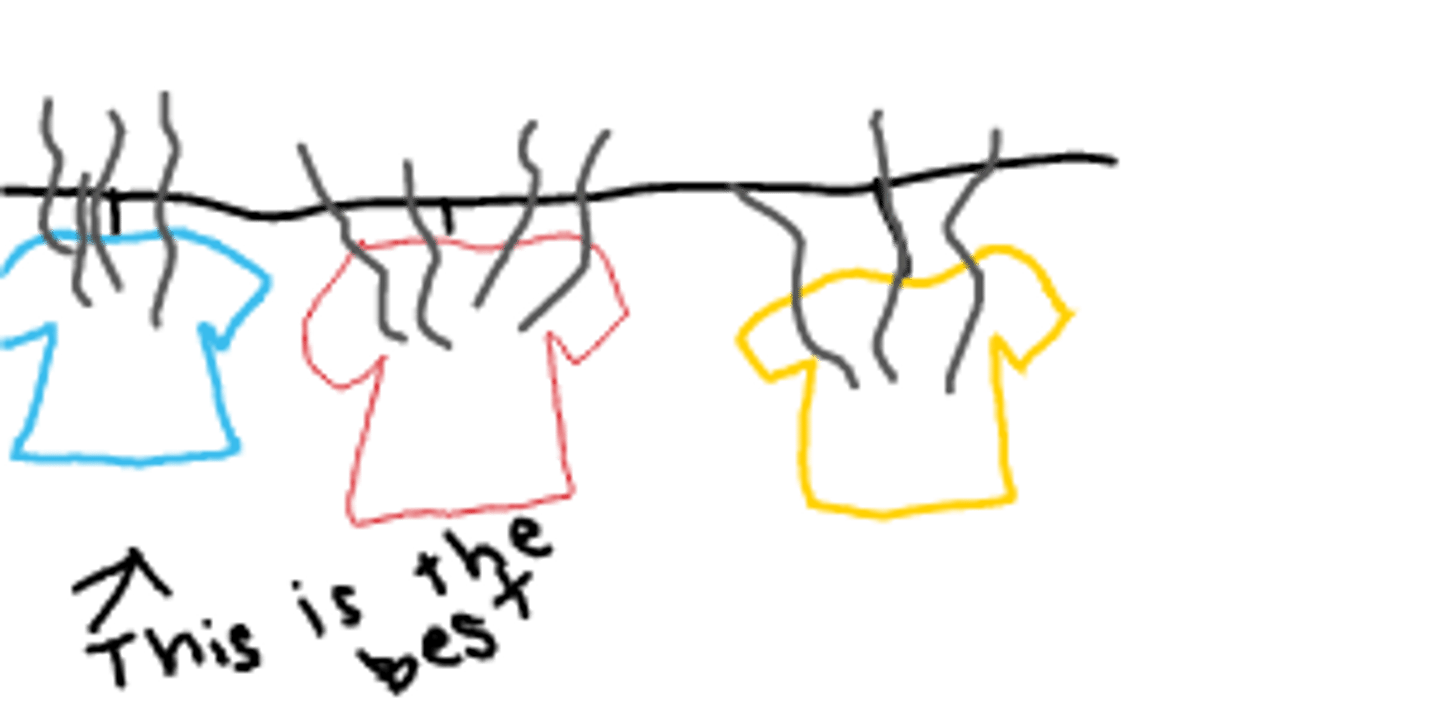
Kendler et al (2006)
A- investigate the heritability of major depressive disorder (MDD) and whether it differs by gender or birth cohort.
M- sample included 15,493 same-sex twin pairs from the Swedish Twin Registry, all with verified zygosity. Twins were interviewed by trained professionals via telephone between 1998 and 2003.The interviews assessed lifetime prevalence of major depression using DSM-IV criteria. Additionally, twins were asked about:
Shared environments (e.g., childhood household)
Individual-specific environments (e.g., life events as adults)A total of 8056 twins met the criteria for MDD, and 322 reported having received antidepressant treatment.
R- Heritability of major depression was estimated at 0.38, consistent with earlier findings.
Monozygotic twins had significantly higher concordance rates for depression than dizygotic twins, indicating a genetic component.
Women showed higher concordance rates than men, suggesting greater heritability in females.
No relationship was found between how long twins had lived together and likelihood of MDD, implying shared environment had minimal effect.
No significant cohort effects: heritability remained stable across birth cohorts from 1900–1958, including before and after WWII.
Conclusion:The study confirms that major depressive disorder is moderately heritable, with stronger genetic influence in women. It also demonstrates that genetic risk for depression has remained stable over time, adding reliability to findings from previous European twin studies.
Evaluation:
-The study is correlational
-No particular genes were isolated and tested in the study.
-Information ab life events and depressive symptoms was self-reported.
-The very large sample size taken from a single population helps to mediate some of the concerns above.
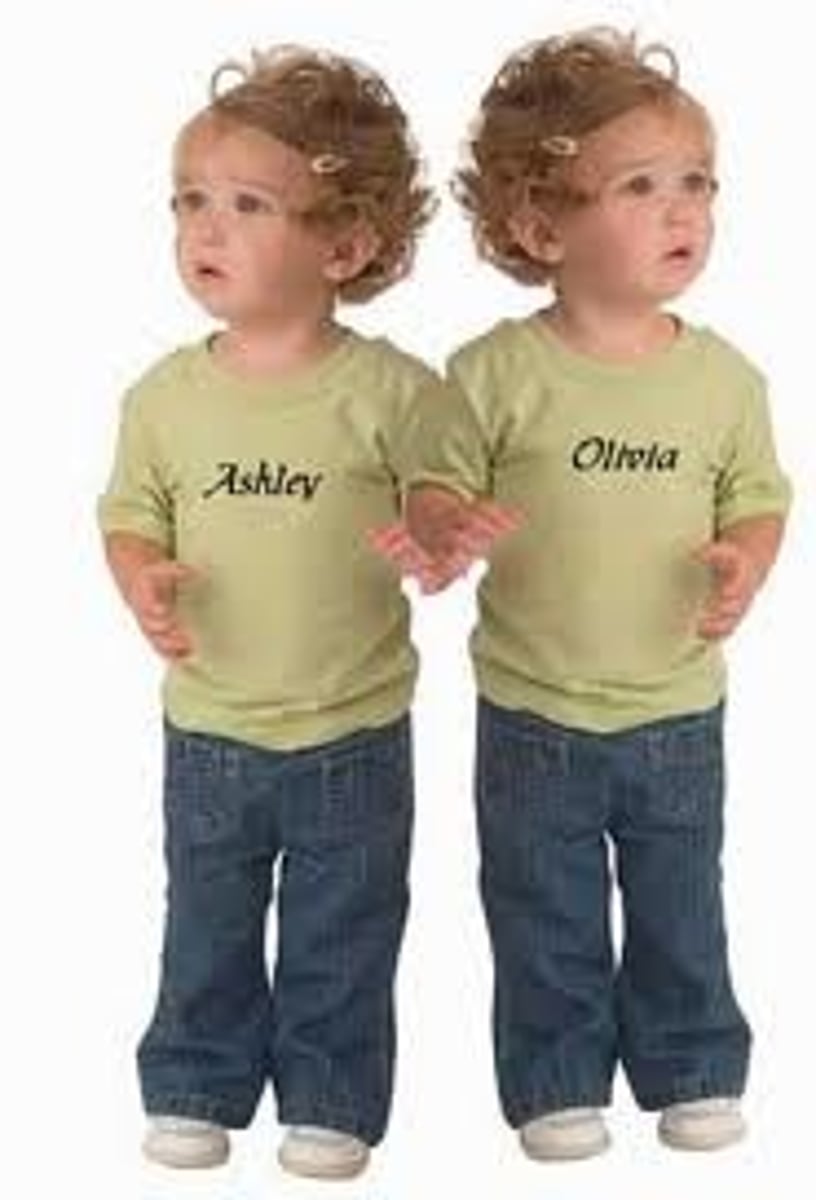
Rogers & Kesner (2003)
A- investigate the role of acetylcholine in the formation of spatial memory using rats as the model organism.
M- 30 rats were placed in a maze and allowed to acclimate with food placed in a corner to reduce anxiety and familiarize them with the environment. After acclimatization, the rats were randomly assigned to one of two conditions:
One group received scopolamine injections, which block acetylcholine receptor sites, directly into the hippocampus.
The other group received saline injections (placebo) to control for the stress or biological impact of the injection process.Scopolamine is known to inhibit acetylcholine, a neurotransmitter believed to be involved in memory formation.To assess memory encoding, researchers compared the average number of errors made in the first five vs. last five trials on Day 1.Memory retrieval was assessed by comparing the first five trials of Day 2 with the last five of Day 1.
R- Rats injected with scopolamine made significantly more errors during the learning phase (Day 1), suggesting impairment in memory encoding. However, there was no significant difference in memory retrieval between the two groups on Day 2.
C- The findings suggest that acetylcholine plays a key role in the encoding of new spatial memories, but it may not significantly affect memory retrieval. The study demonstrates the importance of neurotransmitters in memory formation, particularly in the hippocampus.
Evaluation:
- controlled experiment with a placebo condition to avoid the effect of confounding (extraneous) variables.
-study can establish a cause-and-effect relationship;
-reductionist approach to understanding memory
- there are questions about the extent to which findings can be generalized to humans.
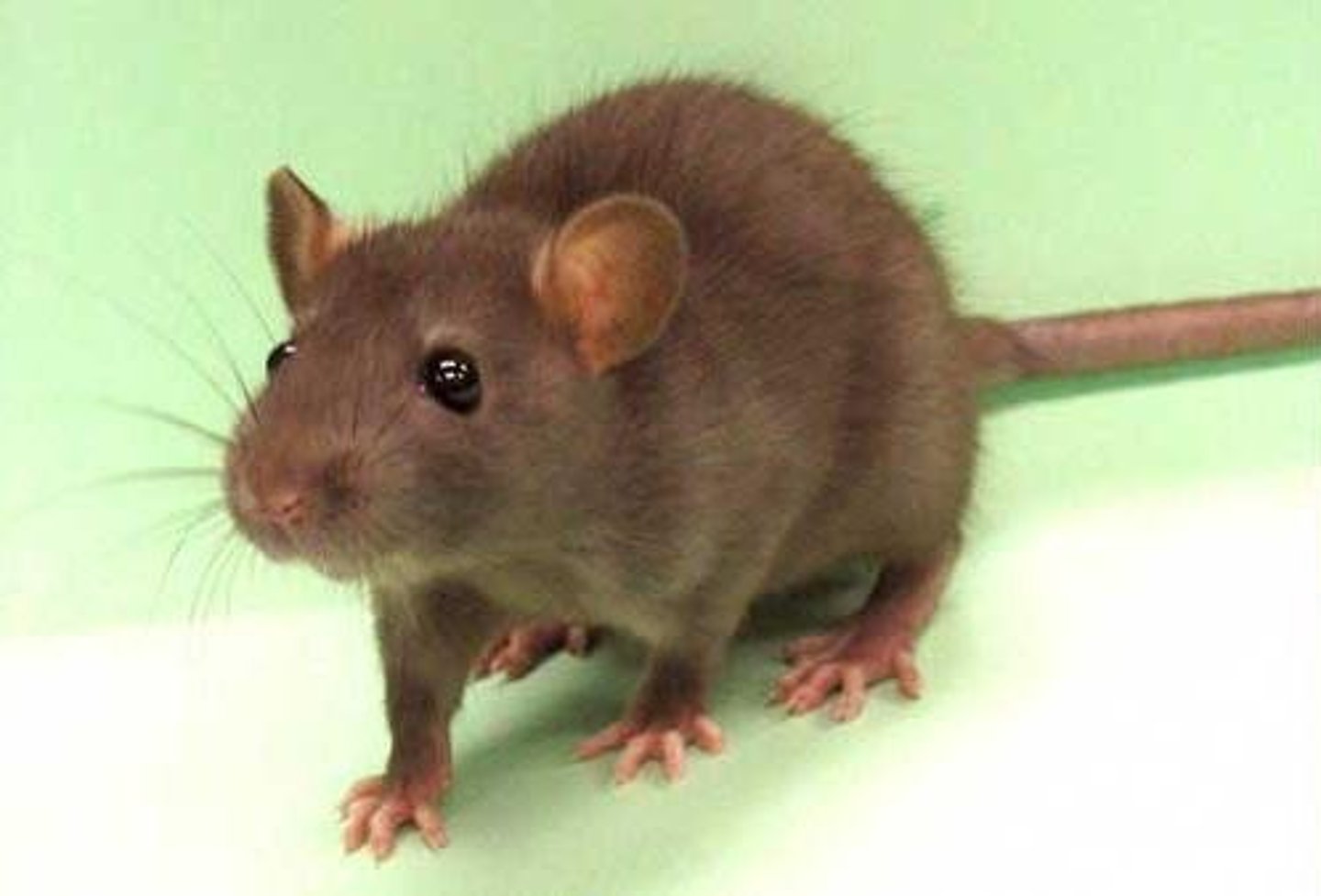
Meaney et al (1988)
Aim:To investigate the effect of glucocorticoids (stress hormones) on memory and aging in rats.
Method:Using an independent samples design, newborn rats were randomly assigned to two groups:
Treatment group: Handled daily for 15 minutes from birth to weaning and brushed to simulate maternal grooming.
Control group: Separated from their mother but not handled.At age two, rats were placed in a milky water maze with a hidden platform. Researchers tracked how directly rats navigated to the platform, based on memory of previous trials.
Results:Rats in the control group took longer and less direct paths to find the platform. They also showed hippocampal cell loss and greater spatial memory deficits. Groomed rats showed fewer cognitive impairments and less neuron loss.
Conclusion:Early grooming activates genes that help regulate the stress response, protecting hippocampal neurons. Chronic exposure to glucocorticoids impairs memory by damaging the hippocampus, an effect linked to reduced acetylcholine and possibly to Alzheimer's. The study highlights the role of epigenetics in stress and memory regulation.
Evaluation:
-questionable to what extent we can generalize the findings to human beings.
- the study was artificial - lacking ecological validity.
This research led to new theories of the role of stress on cognitive functioning.
-to measure hippocampal volume in rats, the animals had to be killed. There are ethical concerns about the killing of animals in research

Zhou (2014)
A- investigate the effect of the pheromones AND (androstadienone) and EST (estratetraenol) on the perception of gender in motion among heterosexual and homosexual males and females.
M- sample included 96 healthy non-smokers, divided equally into four groups: heterosexual males, heterosexual females, homosexual males, and homosexual/bisexual females.Participants viewed a point-light walker (PLW) task—a set of moving dots mimicking human motion—and identified the sex of the figure.Over three days, participants were exposed to either AND, EST, or a control scent, all mixed with cloves. Scent order was counterbalanced to reduce order effects. Tasks were performed once daily under each scent condition.
R- AND exposure led to increased "masculine" identification in heterosexual females and gay males.
EST increased "feminine" identification in heterosexual males.
Neither scent had a significant effect on lesbian/bisexual women or heterosexual males (in the case of AND).
C- AND and EST appear to function as chemosensory cues that influence gender perception in a sex- and orientation-specific manner, suggesting a possible biological basis for sexual attraction.
Evaluation:
- experiment, allowing for cause-and-effect conclusions between exposure to AND/EST (IV) and gender perception (DV).
- Differences in findings across gender and sexual orientation suggest these variables also influence the DV, possibly moderating the IV’s effect.
- Counterbalancing was used to control for order effects like practice or fatigue.
- Hare et al. (2017) failed to replicate the results, raising concerns about the reliability of Zhou et al.'s findings.
- The pheromone doses used were much higher than natural human secretion, limiting the ecological validity and real-world applicability of the study.
Weissman et al (2005)
A- investigate the potential genetic transmission of Major Depressive Disorder (MDD) across three generations through a longitudinal family study.
M- The study followed 161 grandchildren, their parents, and grandparents over 20 years. Grandparents with depression were originally selected from a mood disorders clinic, while non-depressed participants came from the local community. Data was collected through four clinical interviews per participant, conducted by clinicians blind to previous diagnoses. Diagnoses were confirmed through researcher triangulation by a psychiatrist and a psychologist. Inter-rater reliability was high: 0.82 for MDD, 0.65 for anxiety, and 0.94 for alcohol dependency.
R-59.2% of grandchildren with two generations of depression showed psychiatric symptoms by age 12.
The highest risk for disorders occurred when both parents and grandparents had MDD.
If only the parent had depression but not the grandparent, there was no significant increase in risk for the grandchildren.
Greater severity of parental depression correlated with a higher rate of mood disorders in children.
C- The study supports a genetic and environmental interaction in the transmission of MDD across generations, with the strongest risk seen when depression is present in multiple generations.
Evaluation:
-longitudinal study, increasing reliability of the data.
-amount of time that a child spent with a healthy grandparent may be a confounding variable in the study.
-use of researcher triangulation increases the credibility of the findings.
-sample of 161 children is a large sample; however, more research would need to be carried out to confirm the reliability of the findings.
-although family (kinship) studies indicate a potential genetic link to behavior, there is no actual genotype studied.

HM: Milner (1966)
A- investigate the effects of brain surgery on patient HM, specifically focusing on his memory capabilities and the role of the hippocampus in memory formation.
M- method triangulation to gather data:
Psychometric testing: HM’s IQ was above average.
Direct observation: Of his behavior.
Interviews: With HM and his family.
Cognitive testing: Included memory recall tests and learning tasks (e.g., reverse mirror drawing).
MRI: Later conducted by Corkin to examine brain damage extent.
R-
HM could not form new episodic or semantic memories (events and general knowledge).
HM retained the ability to form a cognitive map of spatial layouts, suggesting that spatial memory may not rely on the same mechanisms as other types of memory.
HM showed a working memory capacity (able to retain a number temporarily with rehearsal), but couldn't recall it after the task.
Procedural memory (skills) was intact, demonstrated through improvement in reverse mirror drawing, though he had no memory of the learning process.
MRI scans revealed damage to the hippocampus and surrounding areas, explaining HM’s inability to transfer short-term memory to long-term memory.
C- The hippocampus is crucial for transferring short-term to long-term memory but not for storing long-term memories. Procedural memory and other implicit memories are stored elsewhere in the brain. This case supports the theory that different memory types are encoded in different brain regions.
Evaluation:
-longitudinal ase study- over 50 years!
-method triangulation.
-cannot be easily replicated.
-medication taken to treat epilepsy may have resulted in some of the damage
-high ecological validity, no variables were manipulated and HM was observed in his natural environment.
-met high ethical standards of consent, confidentiality, and protection from harm.

Loftus and Palmer (1974)
A- investigate whether the use of leading questions, specifically the verb used to describe a car crash, would influence participants’ estimation of the speed of the vehicles.
M-
Design: Independent samples design.
Participants: 45 students divided into five groups of 9.
Procedure: Each participant watched 7 traffic accident clips (5–30 seconds long). After each film, they gave an account and answered a questionnaire. One key question asked them to estimate the speed of the cars using different verbs: smashed, collided, bumped, hit, or contacted.
R-
The verb influenced the estimated speed:
Smashed: 40.8 mph
Collided: 39.3 mph
Bumped: 38.1 mph
Hit: 34.0 mph
Contacted: 31.8 mph
Results were statistically significant (p ≤ 0.005), showing that the intensity of the verb affected perception.
C- Leading questions can distort memory. The verb used may cause a response bias or actually alter the memory through schema activation (e.g., “smashed” suggests a more severe crash, influencing reconstruction). This supports Bartlett’s theory of reconstructive memory
Evaluation:
-conducted in a lab, which may reduce ecological validity; real-life memory often involves stronger emotions than watching staged videos.
-accident films were made for educational purposes, so participants likely didn’t experience the emotional impact of a real crash.
-high control over confounding variables, allowing cause-and-effect conclusions between verb intensity and speed estimates.
-use of students as participants is a limitation—they may not represent the general population in age, experience, or driving skill.
-many students were likely inexperienced drivers, which could have influenced their ability to accurately estimate speed.
-estimating speed is difficult for most people, not just students, so this limitation may apply more broadly.

Baddeley and Hitch (1974)
Baddeley and Hitch observed in lab experiments that if participants perform two tasks simultaneously that both involve listening, they perform them less well than if they did them separately. They also noticed that if participants performed two tasks simultaneously that involved listening and vision, there was no problem. The procedure where participants carry out two tasks at once is known as a dual-task technique.
This suggests that there are different stores for visual and auditory processing. Baddeley and Hitch suggested that working memory should be seen as a kind of mental workspace, which provides a temporary platform that holds relevant information for use in any cognitive task. Once the task is completed, the information can quickly disappear and make space for a new round of information processing. Baddeley and Hitch have continued to work on the model since it was devised in 1974 and they have added new features to the model in response to criticism and new findings.
Tversky and Kahneman (1974)
A- test the effect of anchoring on estimating the value of a mathematics problem
In this study, high school students were used as participants. Participants in the “ascending condition” were asked to quickly estimate the value of 1 X 2 X 3 X 4 X 5 X 6 X 7 X 8 in five seconds.
Those in the “descending condition” were asked to quickly estimate the value of 8 X 7 X 6 X 5 X 4 X 3 X 2 X 1.
Since we read from left to right, the researchers assumed that group 1 would use "1" as an anchor and predict a lower value that the group that started with "8" as the anchor. The expectation was that the first number seen would bias the estimate of the value by the participant.
The researchers found that the median for the ascending group was 512; the median for the descending group was 2250. The actual value is 40320.
Evaluation:
Highly replicable: Simple design makes it easy to repeat and check reliability.
Strong internal validity: High control allows a clear link between anchor and estimate.
Low ecological validity: The task is artificial and unrealistic (e.g., 5 seconds to estimate value).
Limited generalizability: Real-life application of findings is questionable, though anchoring has been supported in other contexts.
Robust data reporting: Use of the median minimized impact of outliers.
Independent samples design: May introduce participant variability; matched pairs would better control for differences like math ability.

Brown and Kulik (1977)
A- investigate whether surprising and personally significant events can lead to the formation of flashbulb memories—vivid, detailed memories of the moment an event was first learned about.
M- the study used a questionnaire method. Forty white and forty black American male participants were asked to recall circumstances in which they learned about major public events (e.g., assassinations of John F. Kennedy and Martin Luther King Jr.) and the death of someone they personally knew. They answered questions on the place, activity, people present, and emotional responses at the time of hearing the news, as well as how often they had spoken about the event since.
R- 90% of participants had detailed memories of public events and of the death of someone they personally knew. However, flashbulb memory formation was influenced by personal relevance: 75% of black participants had flashbulb memories for the assassination of Martin Luther King, compared to only 33% of white participants.
C- Flashbulb memories are more likely to form when an event is both surprising and personally significant. The results support the idea that emotion and personal relevance enhance memory encoding, though no biological mechanism was tested in this study.
Evaluation:
-Used questionnaires/interviews—cannot establish cause-and-effect.
-Procedure is replicable, increasing potential reliability.
-Retrospective self-report data may be inaccurate or unverifiable.
-Actual surprise or emotional intensity at the event cannot be objectively measured.
-Rehearsal's role in memory formation was assumed but not directly measured.
-Results may be influenced by demand characteristics (e.g., social desirability).
-Sample limited to American males—shows gender and cultural bias.
-Findings may not generalize; collectivist cultures may experience fewer FBMs.

Levine et al (2005)
A- investigate the effect of in-group bias on helping behavior among football fans.
M- A field experiment was conducted with 45 male university students who were self-identified Manchester United supporters. Upon arrival, they were told the study would take place in a different building, requiring them to walk across campus. On the way, a confederate pretending to be injured (grabbing their ankle and in pain) appeared wearing either a Manchester United shirt (in-group), a Liverpool FC shirt (rival out-group), or a plain t-shirt (neutral).
R- Participants were significantly more likely to help the confederate when he wore a Manchester United shirt. Helping rates dropped when the confederate wore a Liverpool shirt or a plain t-shirt, with little difference between those two conditions. This suggests that group membership, rather than rivalry or neutrality, had the greatest influence on prosocial behavior.
C- The study supports the idea that in-group favoritism influences helping behavior. People are more likely to assist others they perceive as part of their own social group, even when the cost of helping is low.
Evaluation:
✅ High ecological validity — realistic helping scenario.
✅ Supports Social Identity Theory — more help for in-group members.
✅ Clear manipulation of in-/out-group with team shirts.
❌ Sample bias — only male Man Utd fans, limits generalizability.
❌ Deception used — ethical concerns with fake injury.
❌ Cultural bias — findings may not apply outside UK football culture.
❌ Extraneous variables (e.g. mood, time) not fully controlled.

Bandura (1961)
A- investigate whether children imitate aggressive behavior observed in adults, and whether the model’s gender or the child’s gender affects this imitation.
M-
Sample: 72 children (36 boys, 36 girls), aged 3–6 years, pre-rated for baseline aggression.
Divided into 8 experimental groups and a control group, based on gender and type of model (aggressive, non-aggressive, control).
Children watched a same-sex or opposite-sex adult either act aggressively or non-aggressively toward a Bobo doll.
After mild frustration (denied attractive toys), children were observed for 20 minutes in a room with aggressive and non-aggressive toys.
Behavior was recorded through a one-way mirror using 240 observation units per child.
R-
Children exposed to aggressive models showed significantly more aggression than those in non-aggressive or control groups.
Boys were more physically aggressive, especially when observing a male model.
Girls showed more verbal aggression when exposed to a female model.
Same-sex imitation was more common.
C-Children learn social behaviors such as aggression through the process of observation and imitation, supporting Bandura’s social cognitive learning theory and the concept of vicarious reinforcement.
Evaluation:
✅ Controlled design: Used matched pairs to control for baseline aggression, improving internal validity.
❌ Limited generalizability: Small, homogenous sample (Stanford faculty children) limits external validity.
🤔 Theoretical limitation: Supports learning theory but doesn’t address biological explanations of aggression.
⚠️ Ethical concerns: Exposed children to violence; potential undue stress and unknown long-term effects.
🧪 Low ecological validity: Artificial setup; unlikely real-life scenario where kids are left alone in such conditions.
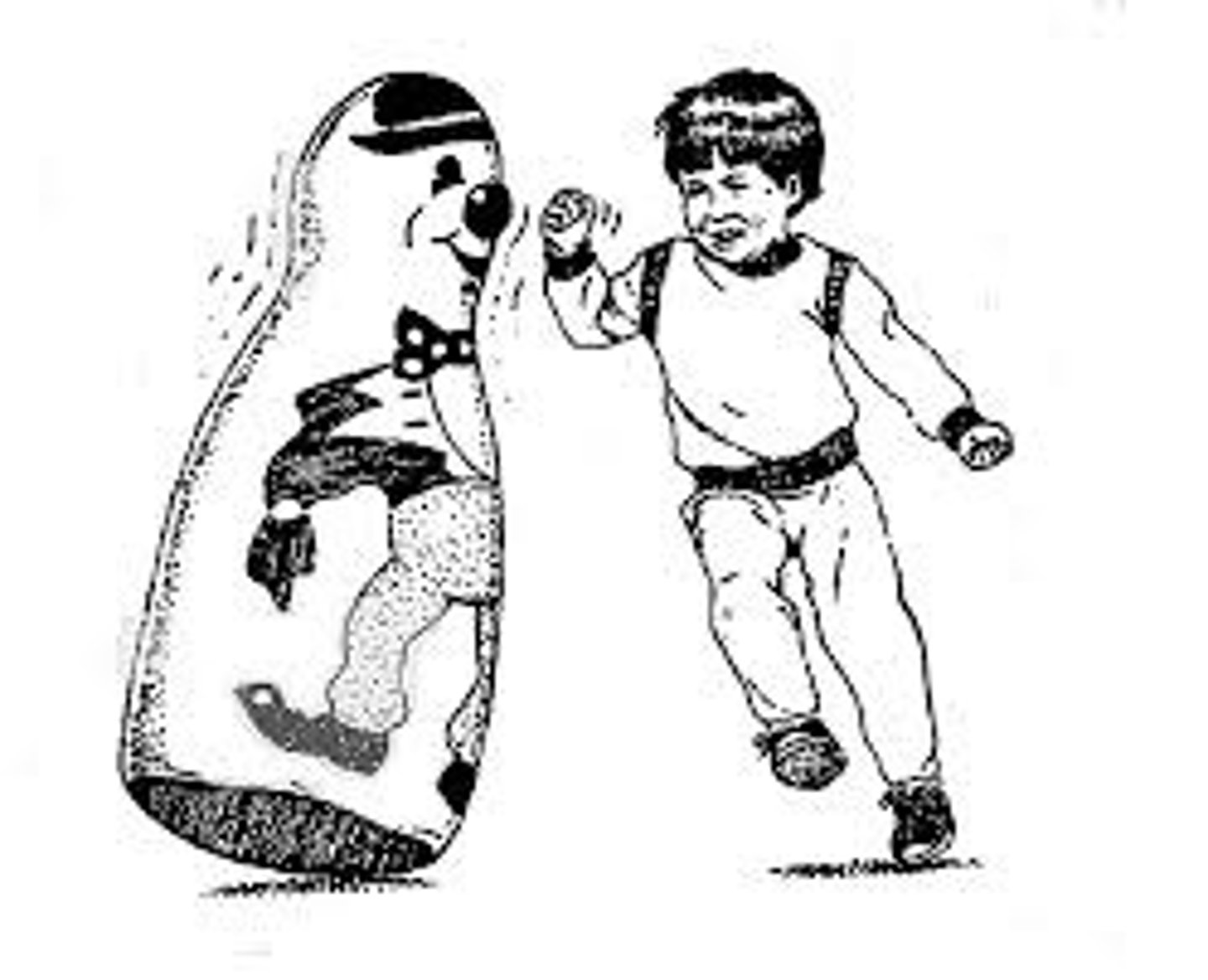
Hillard and Libben (2010)
A- investigate how making gender a more salient social category influences the development of gender stereotypes and intergroup (same vs. opposite sex) behavior in young children.
M-
Design: Pre-test/post-test experimental design
Participants: 57 preschool children (ages 3–5.5) from two US preschools
Procedure:
Measured gender attitudes (POAT-AM test) and observed peer play before and after intervention
Two conditions:
High salience: Teachers used gender-specific language and cues (e.g., lining up by sex)
Low salience: No change to classroom environment (control)
Duration: 2 weeks
Followed by a debriefing session for ethical consideration
R-
High salience group showed:
Increased gender stereotyping (fewer “both” responses on gender attitude test)
Decreased time spent playing with opposite-sex peers
Low salience group showed no significant changes
C- Increased attention to gender categories in the classroom context can lead to stronger gender stereotypes and reduced cross-gender interactions in children.
Evaluation:
Field experiment in a natural preschool setting → high ecological validity, but low internal validity due to less control.
Sampling bias: Participants likely from middle to upper-class backgrounds with gender-neutral parenting → limits generalizability.
Cause-and-effect is suggested, but actual perception of salience wasn’t directly measured.
Ethical concerns: Despite debriefing, there’s risk of lasting impact on children’s gender stereotypes and social behavior.

Berry (1967)
A- investigate whether cultural differences in individualism vs. collectivism affect conformity levels using a variation of the Asch paradigm.
M- Laboratory experiment with independent measures design. Participants completed line-matching tasks with misleading group information to measure conformity.
Participants: Approx. 120 individuals from each group — Temne (rice-farming, collectivistic), Inuit (hunting, individualistic), and Scots (urban and rural, control group). Each cultural group included both traditional and transitional members.
R-
Temne showed the highest conformity (mean ~9),
Inuit the lowest (mean ~2.5),
Scots were intermediate (mean ~4).
No significant difference between traditional and transitional groups within cultures.
C- Collectivist cultures (Temne) tend to show higher conformity than individualistic cultures (Inuit), supporting the link between cultural values and social behavior.
Evaluation:
-The line-matching task is artificial and lacks ecological validity.
-Quasi-experiment: IV manipulated, but no random allocation — limits ability to establish causality.
-Use of native languages controlled for language as a confounding variable, strengthening internal validity.
-Etic approach with standardized procedures allows for replication and supports reliability.
-Temporal validity is questionable due to changes in global exposure and cultural shifts.
-Risk of ecological fallacy — findings may lead to overgeneralization or stereotyping of cultural groups.
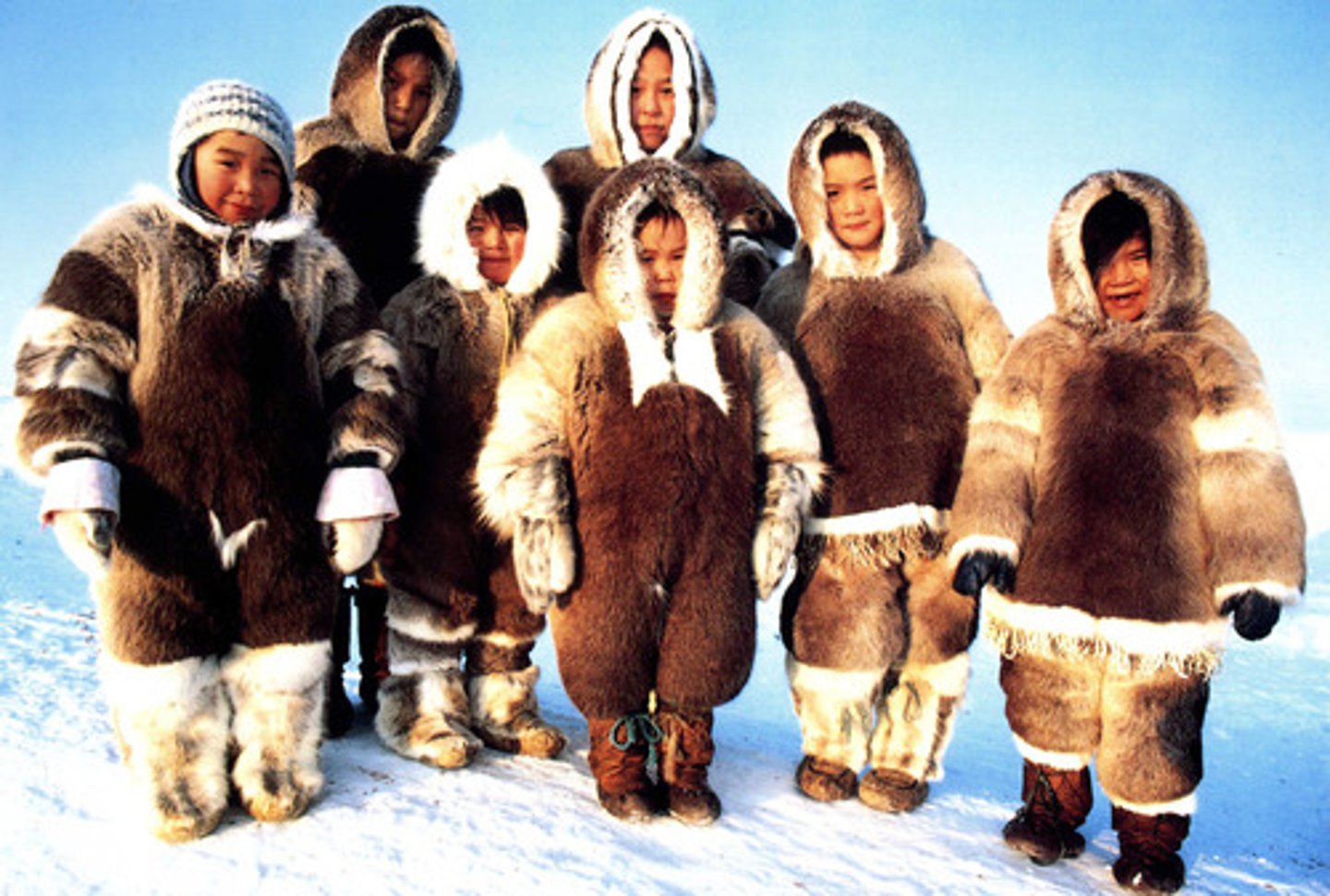
Cases et al (1995)
A- investigate the role of the MAOA gene in the regulation of aggression by studying the behavior of genetically modified mice lacking the gene responsible for producing the MAOA enzyme.
M- A lab experiment using "knockout" mice—genetically engineered to lack the MAOA gene. The mice were observed for behavioral changes during development and tested in resident-intruder scenarios, where a new mouse (male or female) was introduced into the home cage of the test subject. Behavioral responses were recorded and compared with normal control mice. Post-mortem brain analysis measured neurotransmitter levels.
R- The MAOA-deficient mice showed early signs of abnormal behavior (e.g., frantic running, violent sleep tremors, and biting). Adult males demonstrated significantly increased aggression, attacking even female intruders. Brain analysis showed serotonin levels 6–9 times higher than in controls, along with moderately elevated dopamine and norepinephrine.
Conclusion- The lack of MAOA led to excess neurotransmitters and heightened aggression, suggesting a genetic predisposition to aggressive behavior. The findings support the view that genetic factors—specifically, MAOA deficiency—can contribute to aggression, although environmental and social interactions may also influence how this predisposition is expressed.
Evaluation:
-Questionable generalizability—animal aggression may not fully mirror complex human aggression.
-Many with the MAOA gene variant do not show aggression, suggesting a gene × environment interaction is necessary.
-The experimental design allows for cause-and-effect conclusions—something unethical in human studies.
-Raises ethical concerns due to permanent harm inflicted on animals in the research process.
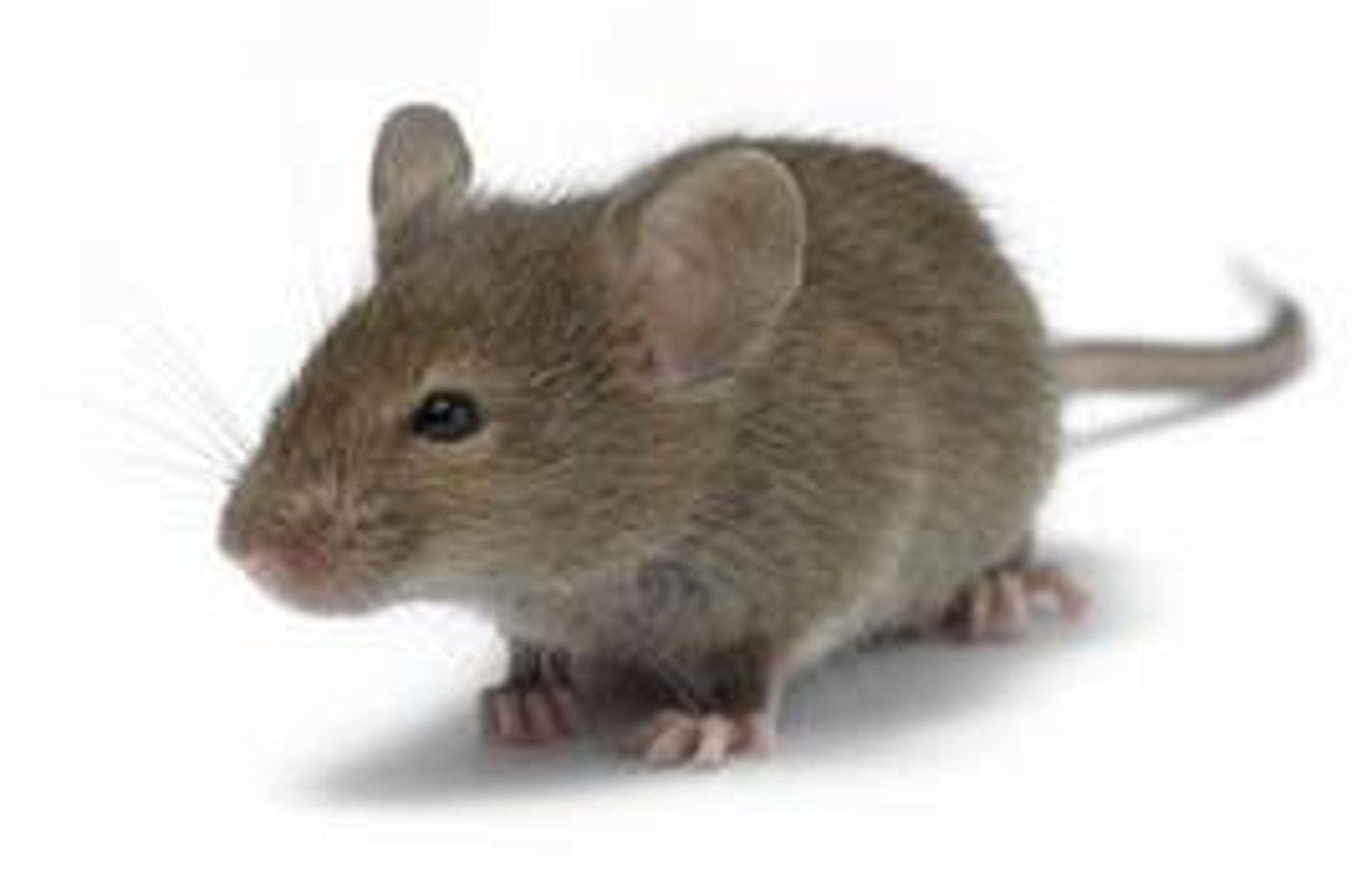
Sapolsky (1990)
A- investigate the impact of social hierarchy on stress and health in wild olive baboons, focusing on the physiological effects of chronic social stress.
M-
Longitudinal case study and natural experiment of a single baboon population in Kenya.
Observation of baboon behavior using point sampling to avoid bias.
Males were anesthetized using blow darts at the same time daily; blood samples taken immediately to measure cortisol levels.
Mainly males were studied to avoid risks to pregnant/lactating females.
R-
Subordinate males had significantly higher cortisol levels than dominant males.
Long-term high cortisol linked to hypertension, high cholesterol, atherosclerosis, suppressed immune and reproductive function, and increased miscarriage risk in females.
C-
Social hierarchy plays a significant role in chronic stress and health outcomes.
Baboons offer a valid animal model for understanding human stress related to social structures.
Evaluation:
-The use of wild baboons increases ecological validity by eliminating artificial lab conditions.
-Method triangulation boosts the credibility of the findings.
-Limited generalizability to humans: human hierarchies are more fluid, and human stress responses may differ.
-Low internal validity due to lack of control over extraneous variables (e.g., hierarchy stability).
-Alpha males in unstable hierarchies may also show high cortisol, complicating conclusions.
-Personality factors might influence stress levels—unclear if low cortisol leads to high status or vice versa.
-Findings are correlational, so causality cannot be determined due to bidirectional ambiguity.

Shmelkov et al (2010)
A- To investigate the role of the SLITRK5 gene in compulsive behaviors related to OCD by creating genetically modified mice and examining whether fluoxetine could reduce these behaviors.
M- Genetically modified mice into three groups:
Homozygous knockout (2 lacZ genes)
Heterozygous (1 lacZ, 1 SLITRK5)
Control (2 SLITRK5 genes)
Assessed anxiety and compulsive behaviors using:
Exploration patterns in a plexiglass arena.
Marble-burying test (counted % of marbles buried as anxiety measure).
Monitored grooming behavior, physical symptoms, and age of onset.
R- Homozygous mice showed compulsive grooming, hair loss, and skin lesions from 3 months.
Heterozygous mice showed similar behaviors later (7–9 months).
Knockout mice explored less but traveled equal distances—suggesting anxiety or compulsivity.
Knockout mice buried significantly more marbles than controls, indicating higher anxiety levels.
C- SLITRK5 is essential for healthy brain development related to anxiety regulation.
Disruption of the gene leads to compulsive behaviors in mice, supporting a genetic basis for OCD-like behavior.
Findings suggest a potential link between SLITRK5 dysfunction and OCD in humans.
Evaluation:
-True Experiment: The SLITRK5 gene was manipulated by the researchers, allowing for a cause-and-effect relationship to be established.
-Ecological Validity: The marble-burying test operationalized anxiety and compulsive behavior in a manner appropriate for mice, with quantifiable results based on the visibility of marbles.
-Reductionist Approach: The study focuses only on observable behaviors, ignoring the cognitive aspects of OCD in humans (e.g., obsessive thoughts), limiting its applicability to the full human experience of the disorder.

Lueck and Willson (2010)
A- investigate variables predicting acculturative stress in a nationally representative sample of Asian immigrants and Asian Americans.
M-
Sample: 2,095 Asian Americans, including 1,271 first-generation immigrants (18+ years when they arrived in the US) and others born in the US to immigrant parents. The sample included various Asian cultures (Chinese, Filipino, Vietnamese).
Procedure: Semi-structured interviews conducted in-person or online, with interviewers sharing cultural and linguistic backgrounds with participants.
Data Collected: Measures of acculturative stress, language proficiency, language preference, discrimination, social networks, family cohesion, and socioeconomic status.
Validation: Random sample of participants' data was validated for accuracy.
R-
Acculturative Stress: 70% of participants (1,433 out of 2,095) exhibited acculturative stress.
Predictors:
Bilingual Language Preference: Lower acculturative stress due to building networks of support both inside and outside the community.
English-Only Preference: Linked to higher acculturative stress.
Negative Treatment: Prejudice, xenophobia, harassment, and threats were significant stressors.
Family Cohesion: Shared values and beliefs within the family reduced acculturative stress.
Economic Satisfaction: Those satisfied with economic opportunities in the US experienced lower stress. Immigrants who would still choose to move to the US had lower acculturative stress.
Conclusion:
Bilingualism and family cohesion were key factors in reducing acculturative stress, while negative treatment and economic dissatisfaction contributed to higher stress.
The study highlights the importance of cultural and social factors in mitigating acculturative stress among Asian immigrants and Asian Americans.
Evaluation
- Semistructured interviews (interviewer effect)

Walder et al (2010)
A- see how genotypes were related to stress responses
M- researchers studied 63 adolescents for one year to see how their genotypes related to their stress responses. Genetic testing using saliva samples showed which variation of the COMT gene the adolescents had. They also measured cortisol samples at three points throughout the year. Genotypes: 17% were Mets, 35% were Vals and 48% were Val/Mets
R- Results showed that after one year of the study, the Mets had a higher average cortisol level than the Vals. The Mets also had the biggest increase between baseline cortisol levels (at the start of the study), compared to one year later. The Vals were quite stable.
C- This study suggests that Mets experience more stress which also supports the warrior/worrier hypothesis, as it shows that Mets generally have higher levels of stress responses
Evaluation:
✅ Strengths:
Longitudinal design allows tracking changes over time.
Biological data (cortisol and genetics) adds objectivity.
Supports existing theory (warrior/worrier).
⚠️ Limitations:
Small sample size (especially for Mets) limits generalizability.
Lack of control for confounding variables (e.g., life events, environment).
Cortisol levels only measured three times — may miss fluctuations.
Limited detail on Val/Mets, despite being the largest group.

Armbruster (2012)
A- The aim of this study was to see how the COMT genenotype affects cortisol increase during an acutely stressful situation
M- A group of 119 healthy boys and girls from Europe aged between 8-12 years old participated in the study. The Trier Social Stress Test for Children was used to induce stress. Cortisol levels were measured before and after the test. Genetics showed that 27% were Vals, 23% were Mets and 50% were Val/Mets.
R- The warriors (Vals) has the lowest levels of cortisol in response to the stress test, and the worriers (Mets) had the highest. Val/Mets were somewhere in the middle. The average cortisol increase was more than twice as high in the Met group compared to the Vals.
C- This study shows that the worriers (Mets) have a much more reactive stress response

Fischer et al (2016)
A- The aim of this study was to investigate the effects of stress beliefs on stress levels and somatic (physical) symptoms like aches, sleep problems, fatigue or pain.
M- There were 216 students from a German university (mostly females of high economic status). They all took two surveys measuring their stress beliefs, stress levels and somatic symptoms. One survey was taken in April (low stress period) and another in September (high stress period).
R- The results showed that having negative stress beliefs (eg "stress is bad for you") led to more somatic symptoms (ie health problems) during a more stressful period.
C- Students who thought stress was bad for them experienced higher levels of stress and this is why they had more physical symptoms related to stress. This shows how beliefs about stress have influence on health.

Jamieson (2012)
A- The aim of this experiment was to see how cognitive reappraisal influences the cardiovascular stress response and attentional bias to emotionally negative information.
M- 50 participants were assigned to one of three conditions: reappraisal, ignore, or no-intervention. The reappraisal condition read journal articles explaining how physiological arousal during stress improves performance. The ignore condition read made up articles about the benefits of ignoring sources of stress. No-intervention task didn't read anything. The participants then completed the TSST. To test for attentional bias to negative information the participants completed an emotional Stroop task. Blood pressure and other cardiovascular measures were taken.
R- The results showed that those in the reappraisal condition reported higher levels of perceived resources (ie challenge appraisal). They also experienced increased cardiac output (more blood pumped from the heart) which is a physiological response that will improve performance on a task like the TSST.
C- The results show that they experienced a challenge response. They also showed less attentional bias for emotionally negative information in the emotional Stroop test. This shows that preconceived beliefs have an impact on cardiovascular stress responses
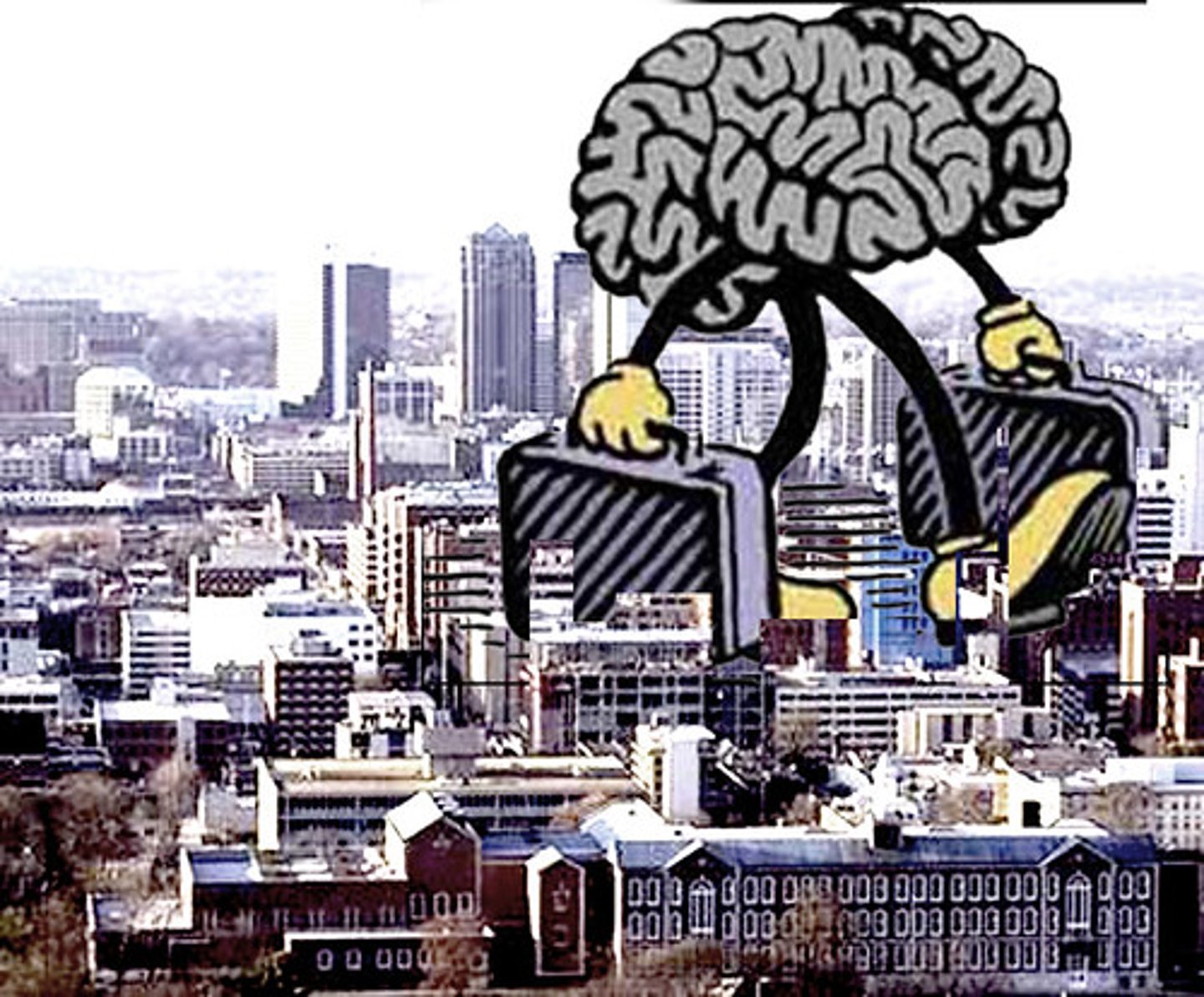
Steen et al (2020)
A- The aim of this study was to see if subjective social status (SSS) is linked with perceived stress in school in Danish teenagers.
M- The researches measured the SSS in general society and SSS in school of over 8,000 Danish 9th graders. The Perceived Stress Scale (PSS) was used to assess stress levels
R- The results showed an average score of 14.7/40. Girls were more stressed than boys (16.3 compared to 12.6).
C- Overall, low SSS was associated with higher perceived stress compared to medium and high SSS. The overall conclusion from the study is that lower SSS was linked with higher rates of perceived stress.

Marmot et al (1997)
A- To investigate whether employees in lower-status jobs, with less control over their work environment, were more likely to develop heart problems over a five-year period.
M- Sample: Over 7,000 British civil servants (men and women aged 35–55) from 20 Whitehall departments in London.
Design: Prospective longitudinal study.
Initial health screening to exclude participants with pre-existing heart conditions.
Data collection: Yearly questionnaires and clinical health screenings (over five years).
Health outcomes (e.g., heart disease, cancer, diabetes) verified with hospital records.
R- Employees in lower-ranking jobs had a 1.5x higher rate of heart problems than those in higher-ranking positions.
Although other risk factors (e.g., smoking, obesity, hypertension) contributed, lack of control over work was the most significant predictor of heart disease.
C- The study found a strong correlation between low job control and heart disease, suggesting that chronic work-related stress (from lack of control) significantly impacts physical health.

Ostberg et al (2012)
A- The aim of this study was to see if girls are really more stressed than boys.
M- 212 Swedish teenagers had their stress levels measured in three different ways: semi structured interviews, questionnaires, and cortisol levels.
R- The results showed that on all three measurements, girls reported higher levels of stress than boys. The questionnaires revealed that girls felt under more pressure than boys. The girls' cortisol levels were also higher in the morning compared to the boys'. High cortisol in the morning is a sign of chronic stress. Qualitative semi-structured interviews revealed that generally the boys and girls agreed that girls are more stressed than boys about schoolwork. They felt that girls were more stressed because they worried more about their grades and their future.
C- The researchers concluded that their results suggest that girls' attitudes, perceived expectations and coping strategies regarding school performance, with focus on achievement, marks and worries about the future, help to explain the higher stress levels among girls.

Knight et al (2017)
A- The aim of this study was to see the effects of testosterone on the stress response when male participants were given testosterone.
M- This was a double blind placebo controlled experiment with 120 male participants from Oregon USA. All participants were given a gel to rub on their skin before doing the Trier Social Stress Test (TSST). The treatment group received a testosterone gel whereas the placebo group received a gel with inactive chemicals. The researchers gathered pre and post data on negative affect (emotion) using a questionnaire. They also measured the participants on the personality characteristic "trait dominance". People with high trait dominance try to obtain status through fear, force or intimidation. Stress responses were measured by salivary cortisol levels.
R- The results showed that the testosterone group had a larger increase in cortisol levels after the TSST compared with the placebo group. This is casual evidence linking testosterone to an increase acute stress response. IN addition the effect was particularly strong in high trait dominance men compared to low trait dominance men.

Buss (1989)
A- To test three evolutionary-based hypotheses about human mate preferences across cultures:
Men prefer youth and physical attractiveness due to reproductive value.
Women prefer men with resources for child-rearing support.
Men value chastity to ensure paternity
M- Cross-cultural survey study with 10,047 participants from 37 samples across 33 countries.
Participants completed two surveys:
Survey 1: Biographical questions (age, marriage preferences, desired number of children) and rating of 18 mate characteristics on a 4-point importance scale.
Survey 2: Ranking of 13 traits in mate desirability.
Surveys were translated and back-translated to ensure accuracy in different languages.
Sampling methods varied by country (e.g., marriage license applicants, random neighborhood sampling, newspaper ads, high school students).
R- Supported Hypotheses:
Women valued financial prospects more than men in 36 of 37 samples.
Men preferred younger women, average preferred age: 24.83.
Women preferred older mates.
Men valued physical attractiveness more than women in 34 of 37 samples (trend present but not statistically significant in the remaining 3).
Unsupported Hypothesis:
Chastity was only valued in 23 of 37 samples; not universally prioritized by men.
C- Findings largely support evolutionary theories of mate selection related to reproductive value and resource investment.
Chastity was not consistently valued, suggesting it may be influenced more by culture than biology.
The study highlights both universal trends and cultural variability in mate preferences.

Bradbury and Fincham (1993)
A- To investigate the relationship between marital satisfaction and communication patterns, particularly how couples attribute responsibility for marital problems.
M- Participants: 47 married couples (not in counseling), average marriage length of 8.5 years.
Recruitment: Through local media advertisements.
Procedure: Completed a marital satisfaction survey.
Individually identified marital problems via questionnaire.
Selected a shared problem to discuss in a 15-minute recorded lab session.
Three trained researchers independently coded video recordings for relationship-enhancing vs. distress-maintaining communication patterns.
R- Low marital satisfaction was linked with more distress-maintaining communication patterns.
These included blaming the partner, assuming selfish or intentional motives, and hostile or rejecting interactions.
Satisfied couples showed more constructive, supportive communication.
C- There is a clear correlation between communication style and marital satisfaction. Couples who are dissatisfied tend to engage in negative attribution and hostile communication, reinforcing relationship difficulties.

Gottman (1994)
A- To investigate the role of positive communication factors—specifically the Active Listening Model—in predicting marital satisfaction and long-term relationship outcomes.
M- The study followed 124 newlywed, childless couples over six years. They completed the Marital Adjustment Test annually and took part in a lab-based conflict discussion. Physiological data was recorded, and the sessions were videoed and coded for signs of active listening and emotional responses. Afterward, each spouse rated their feelings while watching their recorded discussion.
R- At the end of the six-year study, 17 couples had divorced. The researchers found that high-intensity negative emotions such as contempt, defensiveness, and belligerence were strong predictors of divorce for both men and women. Additionally, low-intensity negative emotions such as whining, sadness, and stonewalling in women were also predictive of divorce, although this was not the case when those emotions were shown by men. Interestingly, the Active Listening Model was not supported by the data. Active listening and emotional validation were rarely observed during the couples’ conflict discussions, even among those who remained happily married. The findings prompted the researchers to review 13 years of previous recordings and transcripts, which confirmed that active listening and validation were uncommon in conflict, even in successful relationships.
C- The study found that reducing negative communication was more important for a successful marriage than using active listening or emotional validation, challenging common therapy models.

Markey and Markey (2007)
A- To investigate the matching hypothesis using real-life online dating behaviour
M- 60 heterosexual male and 60 heterosexual female profiles from an online dating site
The profiles were chosen at random
These 120 participants were identified as ‘initiators’, meaning that they initiated contact with other users of the site.
Procedure
The researchers used the real-life online activity of the participants who used the dating site
Records were kept to show who responded (‘reciprocating contacts’) and did not respond (‘non-reciprocating contacts’) to other people’s profile on the site
A maximum of six of the initiators’ profile photographs as well as the reciprocating and non-reciprocating profile photographs were collected by the researchers
A total of 966 photographs (527 female and 439 male) were collected
The researchers used ‘blind’ researchers to rate the photos they had collected
The ratings were based on a 7-point scale of attractiveness (-3 to +3)
Calculations were based on:
the mean attractiveness rating given to each initiator
the mean rating given to each of the initiator’s contacts
separate attractiveness ratings for each initiator’s reciprocating and non-reciprocating contacts
R- The results did not support the matching hypothesis:
the initiator’s physical attractiveness showed no correlation with the mean physical attractiveness of all the people they contacted on the site
the initiators tended to contact people on the site who were rated as more attractive than they themselves were
C- The matching hypothesis cannot account for real-life decisions determining attraction

Dion et al (1972)
A -The aim of the study was to investigate whether physical attractiveness influences how people perceive others in terms of personality traits, happiness, and likely occupational success.
M- The sample consisted of 60 American university students (30 male, 30 female). Each participant received three envelopes containing photos of individuals rated as attractive, average, or unattractive. Half received same-gender photos, and half received opposite-gender photos. Participants rated each photo on 27 personality traits, predicted happiness (marital, parental, and overall), and likelihood of engaging in low-, average-, or high-status occupations. The photo sets and their order were randomized.
R - Attractive individuals were consistently rated higher in positive personality traits, overall happiness, and likelihood of high-status jobs. They were also seen as more likely to have marital happiness, though they were not rated as better potential parents.
C - The study demonstrates a strong "halo effect"—where attractiveness leads to more favorable judgments of unrelated personal qualities—suggesting that physical appearance significantly biases social perception.
Zajonc (1968)
A - The aim of this study was to investigate whether exposure to a certain person originated attraction.
M- Research Method: lab experimentSample: a set of Michigan State University seniors (females)1. Participants were told they were taking part in a study about visual memory2. They were shown a set of photos of male faces, each for 2 seconds.3. Photos were shown in different frequency levels to different groups (the 2 conditions = high and low frequency)4. Each time they were shown the photo, they were asked to rate how much they would like the man on a scale of 1-7
R- When the participants were exposed to the image more frequently, their rating of the likeability of the man in the photo was significantly greater than when they had only seen the image once.
C- This comes to show that merely looking at someone (being exposed to them) more frequently will increase our sense of likeability for them. The results support Zajonc's findings, because they give evidence for the mere-exposure effect that he theorized. It also supports that no evidence of cognition or decision-making underwent during this process, as he claims, because there was no time given to do so.